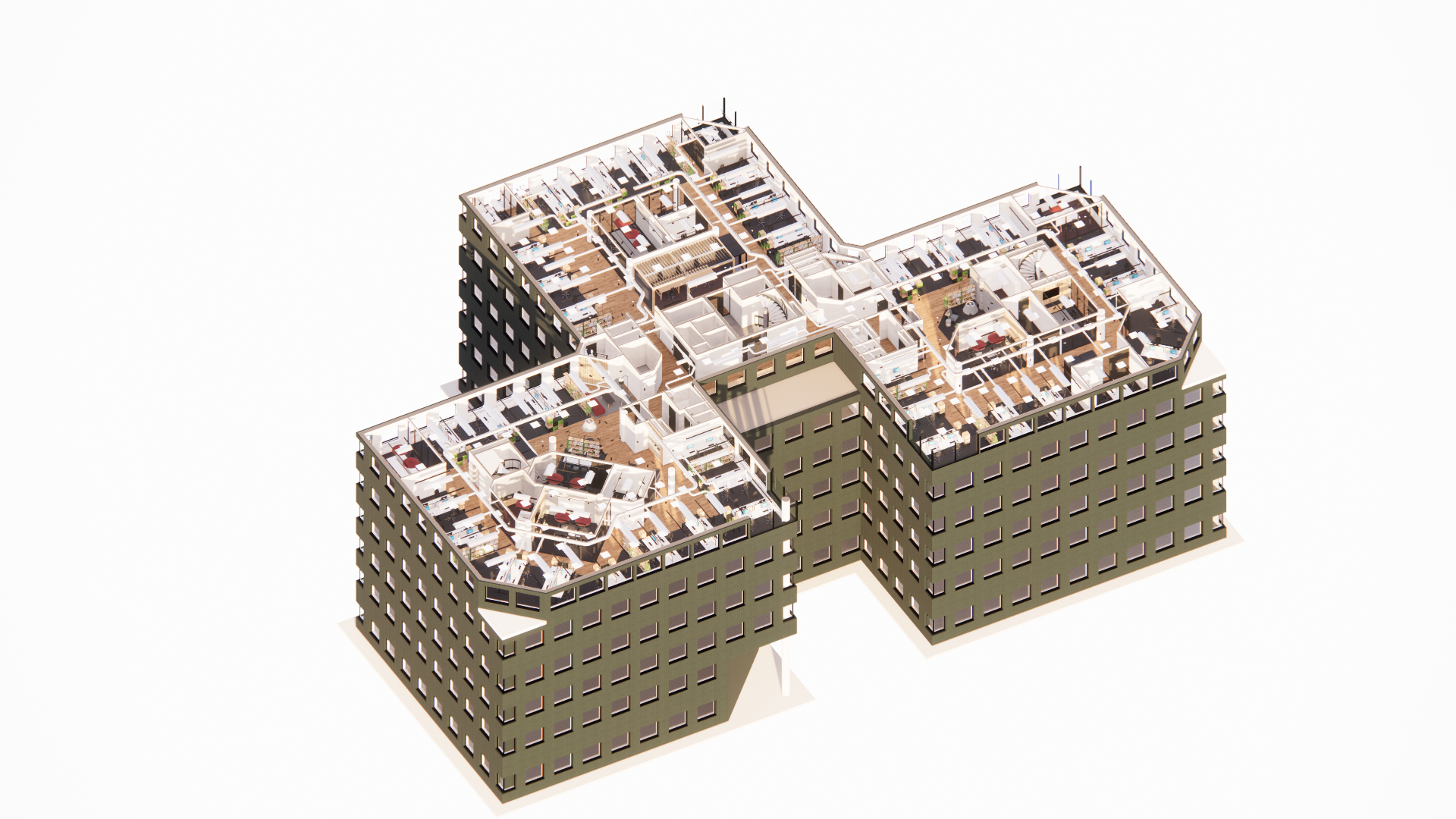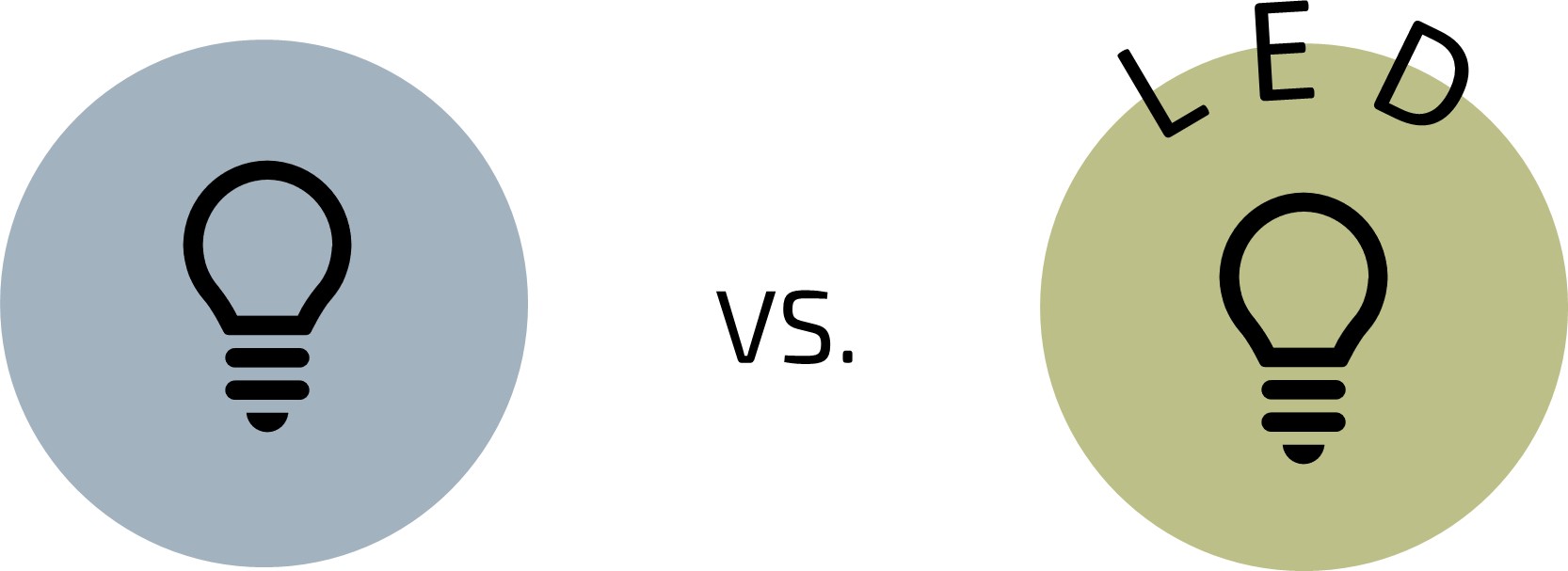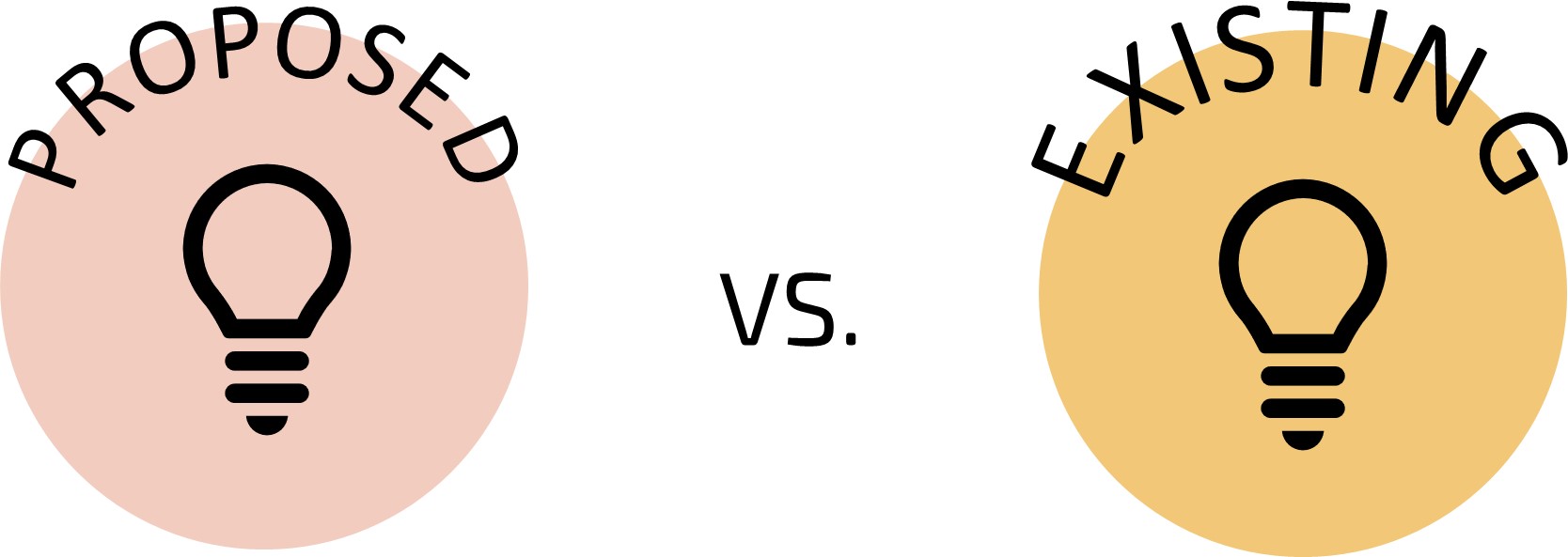There are different types of lighting to consider within a working environment: task lighting, ambient lighting, accent lighting and mood lighting. The way a space is lit can improve productivity and the wellbeing of users and drastically change the look of an office.
It can be tempting to keep existing lighting to save money, but it is worth doing a comparison to see how the existing lighting compares to a proposed lighting scheme. Often you will be able to save a considerable amount of money and energy.
A member of our design team used one of our existing projects to produce a comparison which is a relatively easy process using our BIM capabilities. This particular case study is in relation to an office building built in the 1980’s and while it is an excellent office space with plenty of natural light, the existing lighting consisted of 600x600mm panel lights – that were not LED. The client appointed a lighting designer to come up with a scheme for the new office space, and once this was shared with us, we were able to populate our 3D model with the exact assets specified. These 3D assets include the illuminance, wattage and lux levels for each piece of lighting.
 Image shows the floor of the building that this case study relates to.
Image shows the floor of the building that this case study relates to.
Below is a basic comparison of incandescent light bulbs and LED:

415 Lumens, 40 Watts 1000 Lumens, 9 Watts
– Lasts up to 1,000 hours – Can last up to 50,000 hours
– Produces infrared light, – Uses up to 80% less energy
which can be damaging to artwork & fabrics
– Gets incredibly hot with use – – More expensive but requires
air conditioning must work harder less frequent replacement
– Fragile – Cooler to the touch
– Limited colour choices – Available in various colours and temperatures
– Contains toxic mercury and phosphorus – Free of any harmful chemicals or gases
– Glass is considered hazardous – Generally shatterproof
Once this information was scheduled, we could easily calculate the kWh/m²/year – which is a practical international standard for energy rating that looks at energy consumption per square metre.
To calculate the kWh we simply had to divide the total wattage by 1000 and then multiply it by the hours used (this was assumed to be 10 hours per day, based on the average office and to include time that cleaners or maintenance personnel are in attendance).
It was assumed that the building would be used 5 days per week, over the course of 52 weeks, giving us a total annual consumption of 17942kWh/yr.
We divided this by the total square meterage, giving us a total of 13kWh/m²/yr for the proposed lighting.
Compared to the existing, which if kept would use 22kWh/m²/yr.
“According to the Department for Business, Energy & Industrial Strategy (BEIS) the average cost for standard electricity in the UK in 2021 was 18.9p/kWh.”
Based on this we can compare the cost of the proposed lighting scheme vs. the existing:

Approximate calculations: Approximate calculations:
– £13 per day – £22 per day
– £65 per week – £112 per week
– £3,390 per year – £5,857 per year
Total Saving Over One Year = £2,467
Over the lifetime of the lease or lifetime of the building this would be a significant saving both in terms of cost and energy consumption. Sometimes it is worth thinking about the cost of the fit-out over the lifetime of the refurbishment. Try not to get put off by large costs at the outset of a project because often you will end up saving money over time.

